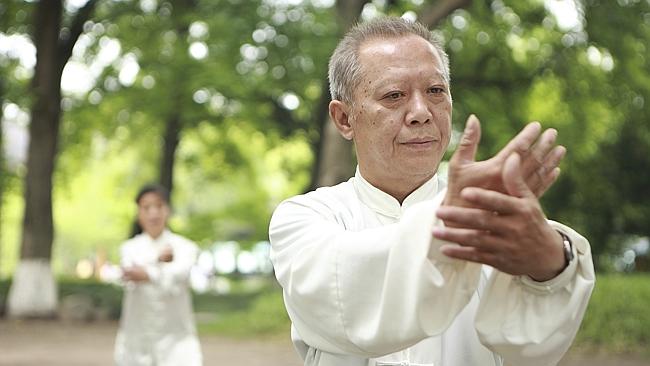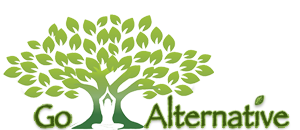
Natural therapies: what the scientists say
ALEXANDER TECHNIQUE
A type of physical therapy, developed by Shakespearean orator Frederick Alexander at the turn of the last century, that aims to improve movement and correct posture for pain relief and better health. “In people with low back pain, Alexander technique may be effective in improving pain and disability in the short term (up to three months) but the long-term effectiveness of Alexander technique on these outcomes is uncertain.” Insufficient evidence for other conditions.
AROMATHERAPY
Essential oils administered through massage, aromatic baths and/or vaporisation, as first practised in a number of ancient civilisations. “There is some evidence to suggest that aromatherapy may be effective in reducing anxiety and agitation in dementia patients, and possibly in reducing generalised anxiety in some other situations, such as before healthcare procedures. The effect of aromatherapy plus massage compared to massage alone may help alleviate pain.” However, these findings came from small, poor-quality studies, and for other conditions the evidence is even less conclusive.
AYURVEDA
A traditional Indian therapy, hundreds of years old, that seeks a balance of three elemental substances, the doshas, to avoid ill health and disease. Inconclusive. “The evidence review for Ayurveda is more complex than other in-scope therapies requiring additional research, translation, of systematic reviews into English and consultation with the Indian ministry.”
BOWEN THERAPY
A soft-tissue remedial therapy, or form of bodywork primarily focused on the myofascia, developed by Australian Tom Bowen in the 1950s. Proponents say its non-invasive, gentle movements promote healing by stimulating the body’s nervous, endocrine and fascial systems.
“There is currently insufficient evidence from systematic reviews within this field to reach any conclusion regarding the effectiveness, safety, quality or cost-effectiveness of Bowen therapy.”
BUTEYKO
Breathing techniques have been taught for hundreds of years in both Western and Eastern cultures for treating numerous conditions including asthma. Buteyko was introduced into Australia in the 1990s. “In people with asthma, the Buteyko breathing technique may potentially reduce bronchodilator use compared with inactive control but has no consistent significant effect on pulmonary function, asthma symptoms or quality of life.” Overall, insufficient evidence to support its use in the management of asthma.
FELDENKRAIS
This method, developed by Israeli physicist Moshe Feldenkrais in the 1940s, aims to improve posture, breathing and movement, along with mindfulness and sense of wellbeing, by combining gentle touch with training. “There is a paucity of evidence regarding the effectiveness of Feldenkrais for the improvement of health outcomes for any clinical condition in humans.”
HERBALISM
A form of therapy that involves the use of medicinal plants or plant-derived substances to prevent and treat illness. The three main types of herbalism are Chinese, Ayurvedic and Western. “Since the evidence base for individualised herbal medicine, as practised in Western herbalism, is sparse, the reviewers were not able to reach any conclusions as to its effectiveness or potential harms.” There is a large body of research on individual herbal agents and remedies but little in the way of systematic reviews of herbalism as a practice.
HOMOEOPATHY
A 200-year-old form of alternative medicine, based on the principle that substances that cause symptoms in a healthy person have the ability to treat an ill person with the same symptoms when diluted and agitated. “There is a paucity of good-quality studies of sufficient size that examine the effectiveness of homoeopathy as a treatment for any clinical condition in humans.” Available evidence is “not compelling” and fails to demonstrate that homoeopathy is effective.
IRIDOLOGY
An examination of the pigment irregularities in the iris thought to reflect abnormalities of specific organs and/or functions of the body. Hundreds of years old. “It is not possible to draw conclusions about the efficacy of iridology in the absence of reviews that include up-to-date, high quality studies.”
KINESIOLOGY
Originating in the 1970s as a study of body movement, this therapy combines Western techniques and Eastern wisdom to promote physical, emotional, mental and spiritual health.
“There is currently insufficient evidence from systematic reviews within this field to reach any conclusion regarding the effectiveness, safety, quality or cost-effectiveness of kinesiology.”
MASSAGE THERAPY
Kneading or manipulating muscles and soft tissue to improve wellbeing or health, through therapies including remedial massage, sports therapy massage, deep-tissue massage, myofascial release, therapeutic massage, myotherapy, lymphatic drainage, traditional Thai massage and Swedish massage. “Moderate quality evidence that massage is effective in providing immediate-term relief in patients with chronic low back pain and for reducing the length of hospital stay in preterm infants.” But, beyond that, the reviewers found the evidence of effectiveness on clinical conditions is sparse and unconvincing.
NATUROPATHY
A range of interventions emphasising the healing power of nature for various acute and chronic illnesses. An unpublished systematic review of studies in North America found it helped patients with chronic conditions; however “the effects of naturopathic practice, as delivered in Australia, are uncertain for those chronic conditions for which evidence was identified (anxiety, multiple sclerosis, cardiovascular disease and musculoskeletal conditions) and may differ substantially from the estimates of effect observed in the North American study”.
PILATES
Developed by Joseph Pilates in the early 20th century, this method of exercise combines physical exercises with breathing regulation and mental techniques. Promoted as an aid for, among other things, breast cancer, strength, balance, functional performance and falls prevention in older people, low back pain, and stress urinary incontinence in women, however there is insufficient evidence of its effectiveness. “The effects of Pilates as an alternative treatment for a number of clinical conditions are uncertain.”
REFLEXOLOGY
Where pressure is applied, usually to the feet, to stimulate energy and release “blockages” in specific areas that cause pain or illness. “The effect of reflexology on improving outcomes is uncertain for the clinical conditions for which the therapy has been trialled”, including asthma, dementia, headache, infantile colic, insomnia, menopausal symptoms, multiple sclerosis and type 2 diabetes.
ROLFING
A system of hands-on manipulation and movement education, first used by Ida Rolf in New York in the 1930s, that claims to organise the body in gravity. “There is a lack of evidence available from systematic reviews for the effectiveness of Rolfing for any clinical condition in humans. The safety, quality and/or cost-effectiveness of Rolfing are also unable to be determined, as no systematic reviews were identified.”
SHIATSU
A form of massage therapy with acupressure, primarily developed in Japan, to restore balance to the flow of energy within the body. Said to improve wellbeing, lifestyle, diet and/or mind-body awareness. “Reviewers were unable to assess the efficacy, safety, quality or cost-effectiveness of shiatsu from systematic reviews of randomised control trials of the therapy’s effectiveness.”
TAI CHI
Also known as taiji or taijiquan, and originally a Chinese martial art, this therapy combines deep breathing and relaxation with slow and gentle physical movements. “There is very low-quality evidence to suggest that tai chi may have some beneficial health effects when compared to control in a limited number of conditions for a limited number of outcomes including the elderly (muscle strength), heart disease (quality of life), hypertension (SDP, BDP), and osteoarthritis (physical function).” But evidence still sketchy.
YOGA
A traditional Indian mind and body practice that combines physical postures, breathing techniques and meditation or relaxation to restore balance and improve wellbeing. “There is weak evidence yoga improves symptoms in people with depression compared with control. For all other clinical conditions in which yoga was assessed there was insufficient evidence to draw any conclusions about the effect of yoga on outcomes.”
THE FINAL WORD
Advocates of natural therapies say the review ignored or overlooked evidence — a claim strenuously denied by the NHMRC — while some suggest alternative medicine will never have the kind of money Big Pharma expends on research and lobbying. So, could natural therapies still work if they haven’t been scientifically shown to work in the decades or centuries they have been around? The draft review — which will guide government spending — says maybe, maybe not.
“It is important to note, however, that the absence of evidence does not mean that the therapies evaluated do or do not work,” the review says. “It means that there is simply no high-quality research available for these therapies.”
Source: http://www.theaustralian.com.au/executive-living/natural-therapies-what-the-scientists-say/story-fnr5f5xi-1227178789698?nk=e2d8cff2756a57cbfc27a7844e3a1b48

